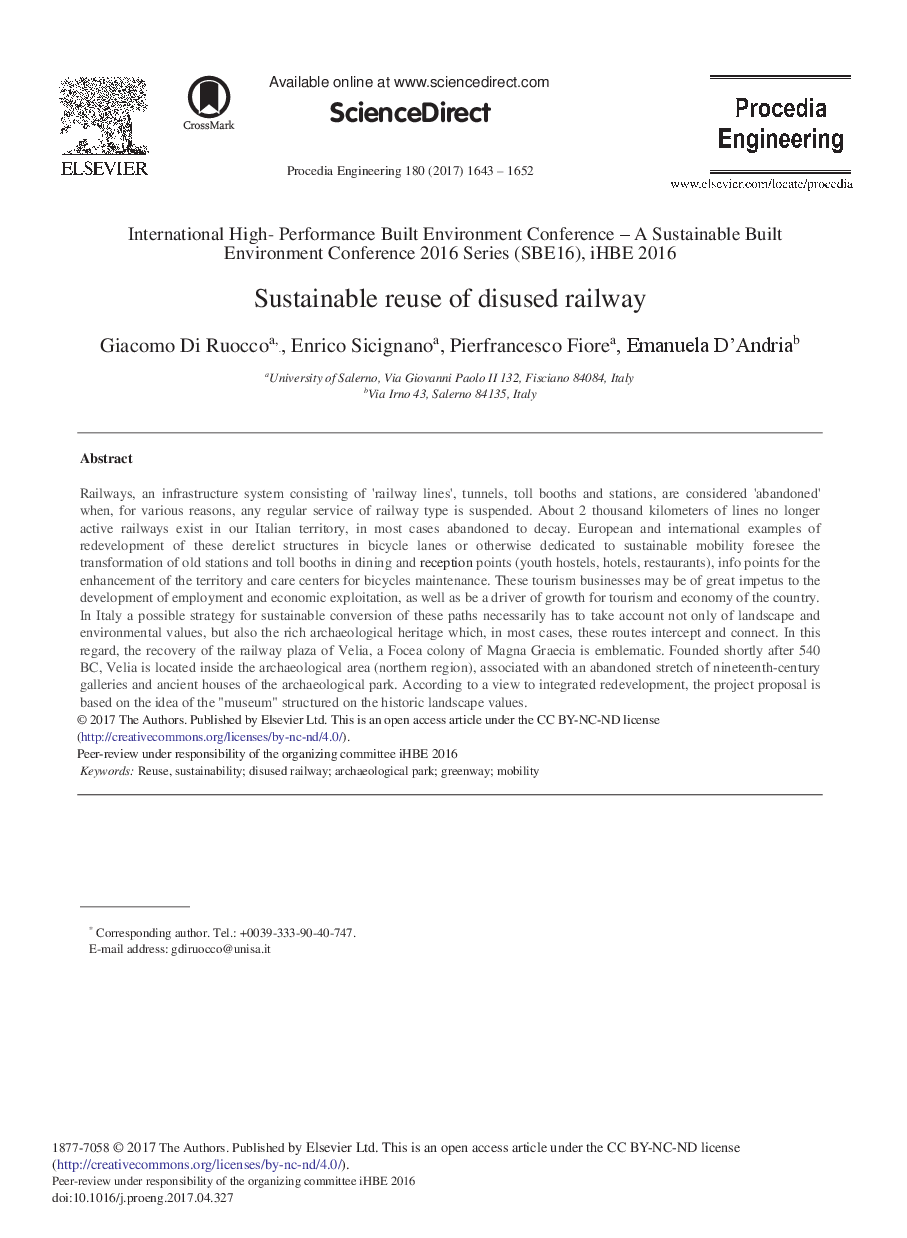ترجمه فارسی عنوان مقاله
استفاده مجدد از راه آهن پایدار
عنوان انگلیسی
Sustainable Reuse of Disused Railway
| کد مقاله | سال انتشار | تعداد صفحات مقاله انگلیسی |
|---|---|---|
| 156751 | 2017 | 10 صفحه PDF |
منبع

Publisher : Elsevier - Science Direct (الزویر - ساینس دایرکت)
Journal : Procedia Engineering, Volume 180, 2017, Pages 1643-1652
ترجمه کلمات کلیدی
استفاده مجدد پایداری، راه آهن غیرقانونی، پارک باستان شناسی راه سبز، تحرک،
کلمات کلیدی انگلیسی
reuse; sustainability; disused railway; archaeological park; greenway; mobility;

